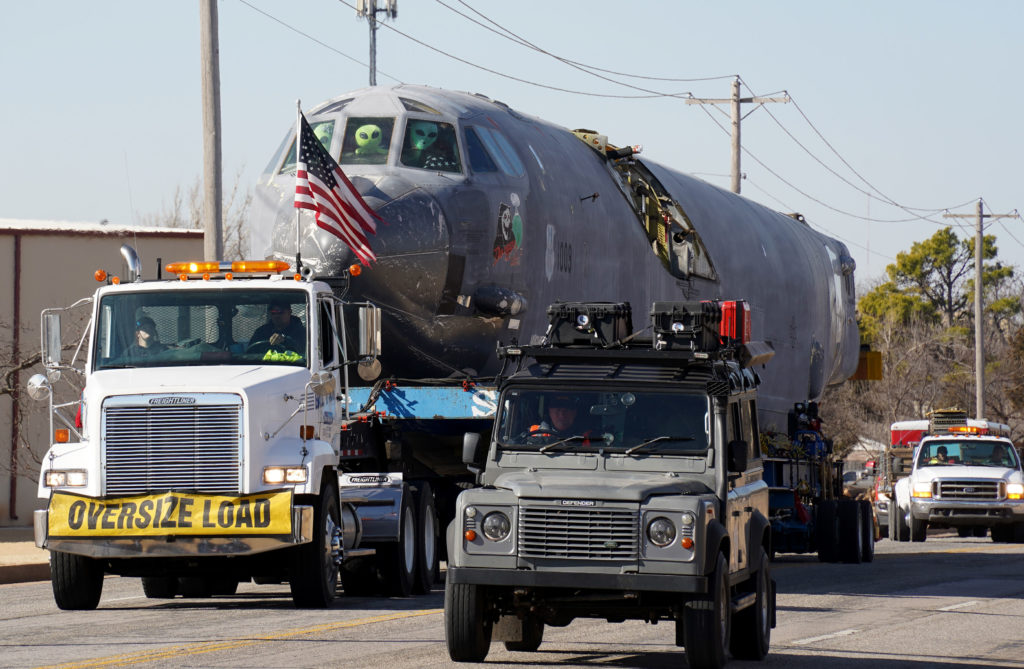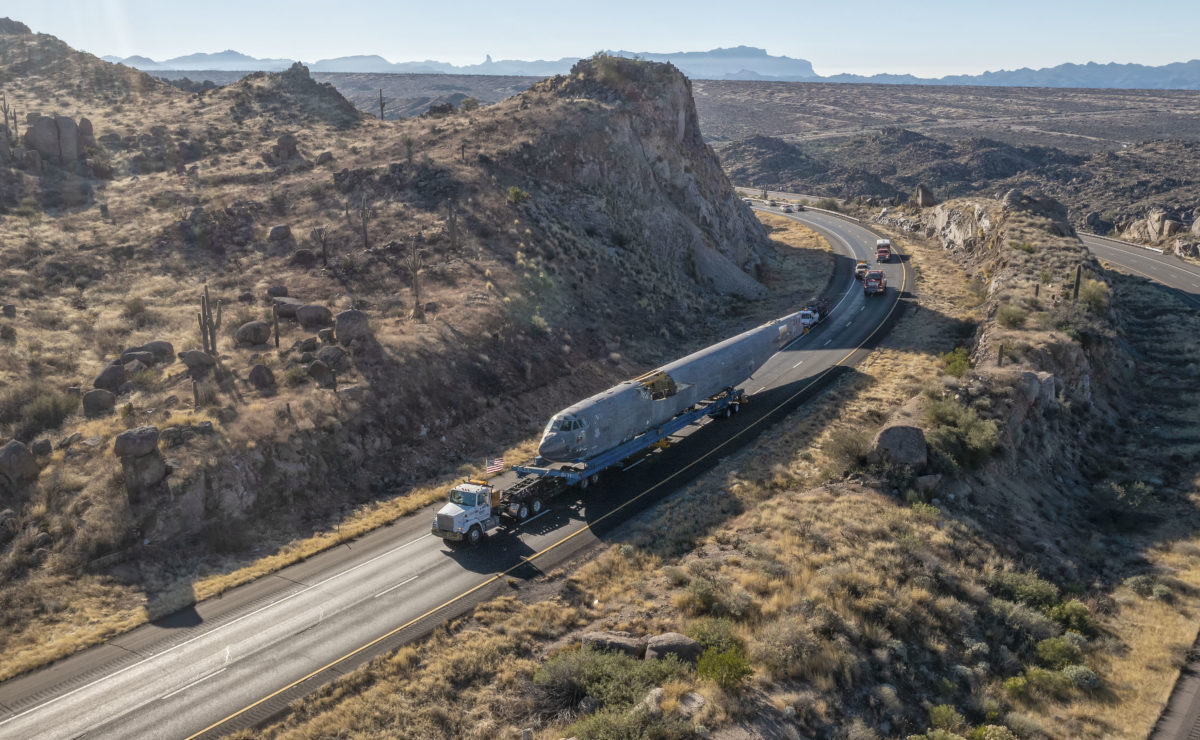On January 3, 2022, people in Arizona witnessed a unique spectacle. A Boeing B-52H Stratofortress, or at least its 160-foot-long fuselage, was hitting the road.
The bomber in question, B-52H 61-0009, known as Damage Inc. II, had served the U.S. Air Force actively from 1961 to September 25, 2008, when it was retired to the 309th Aerospace Maintenance and Regeneration Group at Davis-Monthan Air Force Base. Then it was recalled to duty to help develop a new generation of B-52s. The B-52J “Centuryfortress” program will see the installation of new sensors, communications equipment, avionics, defensive countermeasures and Rolls-Royce engines in the remaining 76 B-52s to improve their efficiency and sustainability until at least the year 2050.
Damage Inc. II will serve as an “integration model” for the research and development of the B-52J and the hypersonic weapons initiative that will arm it. In accordance with the Air Force’s $2.8-million contact to aerospace engineering firm J.F. Taylor in Maryland, the fuselage and left wing will serve that purpose in Oklahoma City, while the right wing and horizonal stabilizer will go to McFarland Research & Development in Kansas for the B-52H Aircraft Structural Integrity Program

“As new weapons are developed and come on hand, we can use it to see how the weapons attach, what needs to change, and if they fit on the aircraft,” explained Colonel Louis Ruscetta, B-52 senior materiel leader with the Bombers Directorate. “This is an asset that will help us integrate different items onto the aircraft quicker. An additional benefit is the cost to maintain a mock-up is fairly low.”
The bomber began its journey in July 2021 at the Pima Air and Space Museum in Tucson, where it underwent four months of disassembly. From there, the parts, including the fuselage, were transported cross country, with Worldwide Aircraft Recovery overseeing the project and Ball & Son handling the actual moving. With the still-gigantic parts taking up two lanes of traffic, the transports had to halt frequently to allow wide-eyed drivers to pass. Navigating some turns and underpasses left only inches to spare. The fuselage reached its destination in Oklahoma on January 22 after a 1,407-mile journey. Long as it was, the road trip was still much cheaper than getting the bomber back into the air for a single, last flight would have been.






